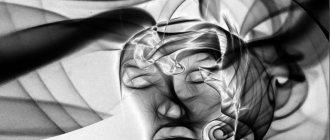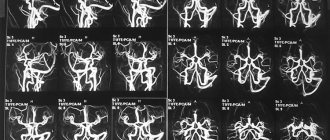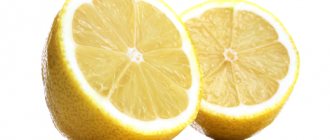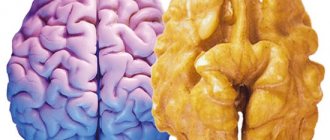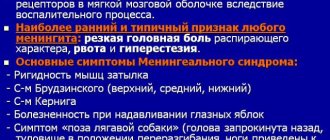Your volleyball > Articles > Nutrition for stroke
A stroke is an acute disorder of cerebral circulation, in which brain cells do not receive enough nutrients and oxygen from the bloodstream, which leads to irreversible damage and even death of neurons. Being the most dangerous critical condition, a stroke often leads to the death of the patient, and those who survive such a vascular catastrophe often remain disabled for life.
Although stroke can affect people of different ages, genders and health conditions, there are risk groups - categories of patients who have an increased likelihood of developing vascular disorders, and in particular stroke. In addition to people suffering from hypertension, atherosclerosis, diabetes mellitus and bad habits, a separate risk group consists of patients who indulge in unhealthy eating habits.
According to the results of recent studies by leading European experts, people who eat properly have a reduced risk of stroke by at least 15-17%. As for the role of diet after a stroke, here the nutritional factor is especially important, because restoring the functional activity of all body systems is impossible without fully saturating the cells with essential nutrients, vitamins and minerals.
Diet goals for stroke
Nutrition plays an important role both in the process of preventing stroke and after a vascular crisis. The principles of the stroke diet are the same and are aimed at achieving the following goals:
- improvement of blood circulation in all parts of the body;
- blood pressure control - preventing blood pressure from rising above 140/90;
- lowering cholesterol levels in the blood and preventing the formation of cholesterol plaques in the vascular bed;
- acceleration of all metabolic processes, especially the stages of fat and carbohydrate metabolism;
- reducing the load on the cardiovascular system, kidneys and liver;
- normalization of the patient's weight.
Creating the right diet for a patient who has suffered a stroke is the most important stage of secondary prevention (preventing a re-exacerbation).
What can you eat if you have a stroke: table No. 10
The main question that arises in the process of prevention and recovery from cerebrovascular accidents is what you can eat during a stroke. Most experts agree that the nutrition of patients in this group should be complete and varied, but the diet involves certain restrictions. An excellent example of the dietary diet of stroke patients is the technique developed by Soviet nutritionists, which was called “table No. 10.”
This technique assumes the following principles:
- Caloric content of the diet. The patient's daily caloric intake should be 2500-2600 kcal. Calorie restriction is achieved by reducing the consumption of simple fats and carbohydrates, which contribute to the development of atherosclerosis and blockage of blood vessels, which provokes a stroke.
- Chemical composition of food. The daily ration of the “table No. 10” diet should contain no more than 400 grams of carbohydrates, 90 grams of proteins (55-60% animal) and 70 grams of fat (25-30% vegetable). A restriction on salt consumption is also being introduced, the content of which in the daily diet should not exceed 6-7 grams.
- Method of preparing food. Meat, fish and vegetables are steamed, boiled or baked without the use of fat and with minimal addition of salt and spices.
- Regularity of meals. The patient is recommended to eat 5-6 times a day in small portions, with equal intervals between meals of approximately three hours. The last meal should be 3 hours before bedtime.
- Drinking liquids. The diet introduces a limit on daily fluid intake at 1.2 liters of clean water per day.
The method of therapeutic nutrition “table No. 10” is based on the following principles:
- First meal. The diet recommends preparing vegetarian soups with vegetable broth. Meat, mushroom and fish first courses, as well as soups containing legumes, are completely excluded from the diet. Vegetable soups can contain potatoes, beets, carrots, tomatoes, and various cereals. The serving of the first course should be from 200 to 400 grams.
- Meat, fish, poultry. It is allowed to eat lean meat - beef, veal, chicken, turkey, rabbit, as well as trimmed pork in small quantities. The meat is boiled, baked, or steamed, and also served as aspic. The consumption of fatty meat is excluded - fatty pork, goose and duck meat, offal (liver, kidneys, brains), smoked sausages, as well as any canned food. Lean fish can be prepared by boiling followed by baking or frying. Fatty fish, as well as salted, smoked and dried fish, caviar and any canned fish are completely excluded from the diet.
- Dairy products. If the patient does not have intolerance, low-fat kefir and cottage cheese are allowed. The “table No. 10” food system allows for limited addition of sour cream, cream and cheese to dishes. Salty and fatty cheeses are completely excluded from the diet.
- Eggs. You can eat 1 egg per day, soft-boiled or served as a steamed omelette or baked in the oven. Fried and hard-boiled eggs are completely excluded from the diet.
- Cereals. The diet includes cereals cooked in water or milk in the form of puddings, as well as pasta. Legumes are completely excluded.
- Vegetables and fruits. The following vegetables are allowed to be consumed: potatoes, cauliflower, tomatoes, carrots, beets, zucchini, pumpkin, cucumbers, lettuce, as well as parsley and cilantro as a seasoning for food. White cabbage and green peas can be consumed in limited quantities. Vegetables can be cooked by boiling and baking with minimal addition of salt. It is advisable to eat more fresh fruits and vegetables. Salted, pickled and pickled vegetables should be excluded from the diet. It is also recommended to completely avoid eating and adding radishes, spinach, sorrel, garlic, onions and mushrooms to dishes. Ripe fruits, fresh berries and dried fruits can be consumed without restrictions. It is also recommended to introduce into the diet compotes, mousses, jelly, honey and jam with minimal sugar content.
- Beverages. Patients can drink weak tea, vegetable and fruit juices (except grape juice), and rosehip decoction. Natural coffee and cocoa are completely excluded.
Compliance with the above recommendations allows you to avoid the development of atherosclerosis, maintain normal functioning of the cardiovascular system and reduce the risk of stroke. Also, “table No. 10” is one of the options for proper nutrition during the recovery period after an acute vascular crisis.
Low-cholesterol diet as prevention of cardiovascular diseases
Cholesterol is a lipid (fat-like substance), the main part of which is produced in the liver, and the rest comes from the environment through food.
The functioning of the body without fat cholesterol is simply impossible. He is the one who helps:
• Strengthen cell membranes, making them elastic. • Produce various hormones, including sex hormones - estrogen and androgen. • Absorb vitamins A, D, E and K. • Produce bile. • Isolate nerve fibers.
Cholesterol is important for the normal functioning of the immune, nervous, and digestive systems, but if there is more of it in the blood than is required for normal life, cholesterol is gradually deposited on the inner walls of the arteries. This is how an atherosclerotic “plaque” is formed - a thick, dense formation that narrows the vessel and reduces its elasticity. This process of formation of such plaques is called “atherosclerosis.” After some time, a blood clot may form at the site of the atherosclerotic plaque, which completely clogs the vessel and cuts off the supply to vital organs. Blockage of the vessel supplying the heart leads to myocardial infarction; blockage of a vessel supplying the brain - to a stroke.
Cholesterol does not dissolve in the blood. Transporters called lipoproteins are used to transport it from cell to cell. High-density lipoprotein (HDL) cholesterol helps carry cholesterol from the arteries to the liver and then eliminate it from the body. HDL cholesterol is called “good” cholesterol: high levels protect against heart disease. The lower the HDL level, the higher the risk of cardiovascular disease. Low-density lipoprotein (LDL) cholesterol, on the other hand, transports cholesterol from the liver to body cells. It is the excess LDL cholesterol that can deposit in the arteries and form atherosclerotic “plaques.” The lower your LDL level, the better. There is another form of lipids whose levels need to be monitored: triglycerides.
The following average values can be considered as a normal lipid profile in adults:
• atherogenic coefficient - less than 3. • TG level - 0.3 - 1.7 mmol/l; • HDL level – not lower than 1.0 mmol/l; • LDL level - 1.2 - 5 mmol/l; • total cholesterol - 3.4 - 5.2 mmol/l. These lipid profile values reflect the norm for middle-aged men.
There are 2 types of high cholesterol:
• Primary or familial/genetic hypercholesterolemia (caused by gene damage and transmitted from father/mother); • Secondary (nutritional or due to concomitant diseases).
To make a diagnosis it is necessary:
• undergo examinations; • discuss lifestyle changes with your doctor; • decide on reduction tactics.
To reduce cholesterol levels, you need to:
1) Change your diet 2) add moderate physical activity, reduce body weight (BMI < 25 kg/m2), 3) eliminate bad habits (quit smoking, alcohol).
If you have chronic CVD (coronary heart disease, hypertension, have had heart attacks, strokes), then cholesterol-lowering drugs are prescribed immediately with lifestyle correction - a dose is selected, a group is selected, most often these are statins, and then after all recommendations are followed, cont.
Basic principles of the hypocholesterol diet (table No. 10)
Limiting fat intake
• Saturated: palm oil, mayonnaise sauces, visible fat on meat products, sausages, margarine - exclude; • Monounsaturated: oleic acid (olive, corn, peanut oils) pork, beef, lamb - limit; • Polyunsaturated (PUFA): linoleic acid contained in sunflower, corn oils, sea fish - increase in the diet;
Reducing the consumption of saturated fat and increasing PUFAs have been proven to reduce the risk of developing coronary atherosclerosis.
Limiting cholesterol intake from food
• Representatives: egg yolks, kidneys, liver, full-fat sour cream, cheese, milk; • No cholesterol in vegetables, fruits, grains; • Increasing the consumption of complex carbohydrates and reducing the amount of easily digestible carbohydrates (sugar);
Complex: dietary fiber (fiber, pectin). Pectin: black currants, apples, plums, carrots, cabbage, oranges. Fiber: oat bran, flakes and flour, peas, beans, vegetables. Easily digestible: honey, jam, condensed milk, confectionery and bread.
It has been shown that people whose diet consists of vegetables, grains and other complex carbohydrates tend to have lower rates of CVD. • Increasing the proportion of plant proteins (legumes and mushrooms) in the diet (at least 50%) in relation to animals.
The main goal of a diet for high cholesterol is to reduce the amount of animal fat. This, in turn, brings cholesterol levels within normal limits. Medical experts highlight the basic rules for the 10 dietary table:
• reduction of sugar-containing foods in the diet; • reducing the consumption of fat and fried foods; • use vegetable fats instead of animal fats; • predominance of fish products on the menu; • reducing the number of meat dishes (each serving should contain no more than 100 grams of meat); • removing fat and skin from meat before cooking; • inclusion of more vegetables and fruits in the diet, with the exception of potatoes and beans; • preparing porridges from all grains that cannot be processed; • maximum exclusion of alcohol and salt.
The list of prohibited foods in the diet includes:
• baked goods and sweets (chocolate, peanut butter, toffee candies, honey, marmalade, syrups, sugar and fructose, marshmallows, ginger and sugared peanuts); • fish, fatty meats in their pure form and broths prepared from them; • caviar, canned food and smoked meats; • pasta, semolina porridge; • cocoa and coffee.
When purchasing products, you should pay attention to hidden fats contained in pork fillets, beef, carbs, ribs and pieces of carcass with a visible amount of fat. Processed meat in the form of ham, sausage, and frankfurters contains a lot of cholesterol. Don't overuse eggs.
Table No. 10 suggests consuming no more than 2 pieces per week. Cholesterol is found not only in sugar, but in all sugar-containing foods. A hypocholesterol diet for men and women, aimed at reducing their amount, excludes cheeses, fatty sour cream and yoghurts, and butter, since they usually have a lot of sugar added. If there is a high level of cholesterol in the blood, it is necessary to completely exclude from the diet processed foods, industrially produced baked goods and fast foods, which contain trans fats and a large amount of saturated fat.
Table of foods containing cholesterol
| High cholesterol content | Lower Cholesterol Alternative |
| Fatty pork | Turkey, white meat chicken |
| Liver, lung and brains | Fish (mostly sea) |
| Squid, shrimp | Mussels |
| Egg yolk | Egg white |
| Caviar black and red | Fruits and vegetables |
| High fat sour cream, cheese | Low fat yogurt |
| Pastries, cakes, biscuits | Oatmeal cookies |
| Butter, lard | Vegetable oil |
Allowed products: According to nutritionists, cereals have beneficial substances. To season porridge, you should not use butter or cook it with milk with a high percentage of fat content.
Cholesterol is absent from vegetable fats. You can eat berries, vegetables and fruits. A diet for high cholesterol allows the use of self-prepared fruit juices and compotes without added sugar.
Table of products table No. 10
| Cereals and baked goods | Oatmeal and cookies, products using wholemeal flour, pasta only made from durum wheat, low-fat puddings, unpolished rice |
| Dairy | Skim or low-fat milk, kefir, cottage cheese, yoghurts, light low-fat cheeses |
| Fish and seafood | Sea fish dishes |
| Fats | Olive oil, soybean oil, sunflower oil, corn oil |
| Vegetables and fruits | Frozen, fresh vegetables and fruits, almonds and walnuts are allowed in small quantities |
| Meat | Turkey, veal, rabbit and chicken without skin |
| Soups and broths | Vegetable or soups with 2 meat broth |
| Spices | Natural seasonings and herbs, mustard, vinegar |
| Sweets | Popsicles, jellies, products without added sugar |
Foods to lower cholesterol:
A cholesterol-lowering diet allows you to include in your usual diet foods that help lower cholesterol. For example, these include:
• Broccoli, avocado. Broccoli is rich in dietary fiber, which reduces cholesterol levels in the blood. All food containing coarse fiber is not absorbed by the intestinal walls, envelops processed food and removes it from the body. Thus, accelerating intestinal motility makes it possible to reduce the amount of cholesterol ingested in foods by approximately 15%. You should consume at least 400 grams of broccoli every day. • Oyster mushrooms. Oyster mushrooms contain a statin, so they are analogues of medications. They reduce cholesterol synthesis in the body and stop the formation of new plaques in blood vessels. The daily requirement for oyster mushrooms is at least 9 grams. • Herring. Herring contains a large amount of Omega-3 fatty acids, which, when the ratio of protein carriers changes, reduces the cholesterol value. It is enough to consume at least 100 grams of herring per day to restore lumen in blood vessels and remove fat and cholesterol from plaques.
Example of a daily menu: A diet for high cholesterol and sugar allows you to combine various products, so creating a tasty and healthy menu is quite simple.
Example of ready meals for the day:
• breakfast: buckwheat porridge seasoned with olive oil, tea without sugar; • snack: apple; • lunch: chicken soup with 2 broths, baked fish with vegetables, pomegranate juice; • afternoon snack: low-fat cottage cheese; • dinner: boiled potatoes, herring, tea without sugar.
Compliance with the diet according to the diet increases the body's endurance, improves
feeling and general state of human health.
Nutrition in the first days after a stroke
Nutrition during a stroke in the first days after the experience is difficult due to the patient’s serious condition. Eating solid foods is often impossible. In this regard, boiled, steamed or baked foods must be served in the form of puree. Often, patients after a stroke are not able to drink fluids in their normal state, which requires the addition of special thickeners. During this period, experts often recommend introducing baby food into the patients’ diet, which fully complies with the requirements for acceptable products after an acute cerebrovascular accident.
In the first days after a stroke, it is very important to ensure a regular supply of food - at least 5 times a day. Portions should be small (200-250 grams) in order to eliminate the high load on the patient’s weakened body. During this period, most experts recommend completely abstaining from consuming dairy products, as well as any oils and fats. Meat should be introduced into the diet gradually, increasing its quantity in order to minimize the load on the digestive system in the first days after a vascular crisis.
It is very important to saturate the patient’s diet with foods rich in folic acid, which promotes the full restoration of damaged brain tissue. This category of products includes fish, fresh fruits and whole grains.
What foods should you avoid?
There are groups of products that can be dangerous for a patient who has had a stroke. You should avoid using them, as they can slow down the rehabilitation process, complicating it by adding new symptoms of the disease. This includes products such as:
- Smoked products: smoked cheese, sausage, fish contain a large amount of resins formed during the smoking process. They are “relatives” of cholesterol because they can accumulate in blood vessels.
- Any sausage, even the highest grade - in addition to meat, sausage contains a lot of food additives, fats, salt and flavor enhancers that are harmful to the body.
- Pickles - pickled cucumbers, tomatoes, sauerkraut contain a large amount of salts, exceeding the daily norm by 5-10 times.
- Mushrooms, high-protein foods, are quite difficult to digest in the body, requiring the synthesis of certain types of enzymes, which puts additional stress on the gastrointestinal tract.
- Fried foods are prohibited because they contain a large amount of fat.
- Sugary carbonated drinks - in addition to the high content of sugars, dyes and flavors, gases lead to bloating.
- Hot spices, seasonings, sauces and ketchups contain a high content of sodium salts, which are directly involved in the formation of cholesterol and increase blood sugar levels.
- Sweets and confectionery products have a high sugar content, which is undesirable for patients who have suffered a stroke.
- Baking - contains a high content of yeast, which triggers fermentation processes in the intestines.
It is recommended to avoid consuming the above products not only during rehabilitation after a stroke, but also in later life. People who adhere to proper and healthy eating rules are less likely to develop a recurrent stroke than those who continue to eat indiscriminately.
Products prohibited for use during stroke
The diet menu for cerebral stroke cannot contain the following products:
- any products made from white flour - muffins, pastries, white bread, pancakes, etc. Preference should be given to coarse rye flour of the 2nd grade;
- fatty and fried foods;
- any canned food, pickles, pickled and soaked vegetables and fruits;
- smoked sausage, smoked fish, smoked meats;
- fatty dairy products (sour cream, cream, full-fat cottage cheese), as well as factory-produced dairy products that have a long shelf life;
- sweets - candies, cakes, cookies, halva, etc.;
- poultry skin due to its high content of toxic substances and hormones;
- fast food, semi-finished products, as well as any products containing a large amount of preservatives and stabilizers;
- radishes, turnips, sorrel, spinach, mushrooms, legumes.
The daily intake of sodium chloride is limited, which is necessary to prevent an increase in blood pressure. It is also advisable to avoid foods containing sugar, since any disorders of carbohydrate metabolism lead to changes in the condition of the vascular wall and provoke various cerebral circulation disorders, including stroke.
You should eat potatoes and pasta no more than twice a week. It is advisable to steam or bake potatoes. A diet after a stroke at home involves supplementing the side dish with foods high in fiber. Grains help lower cholesterol levels. Preference should be given to dark varieties of rice, buckwheat, and wheat cereals, excluding white rice from the diet, the beneficial properties of which are much less pronounced.


